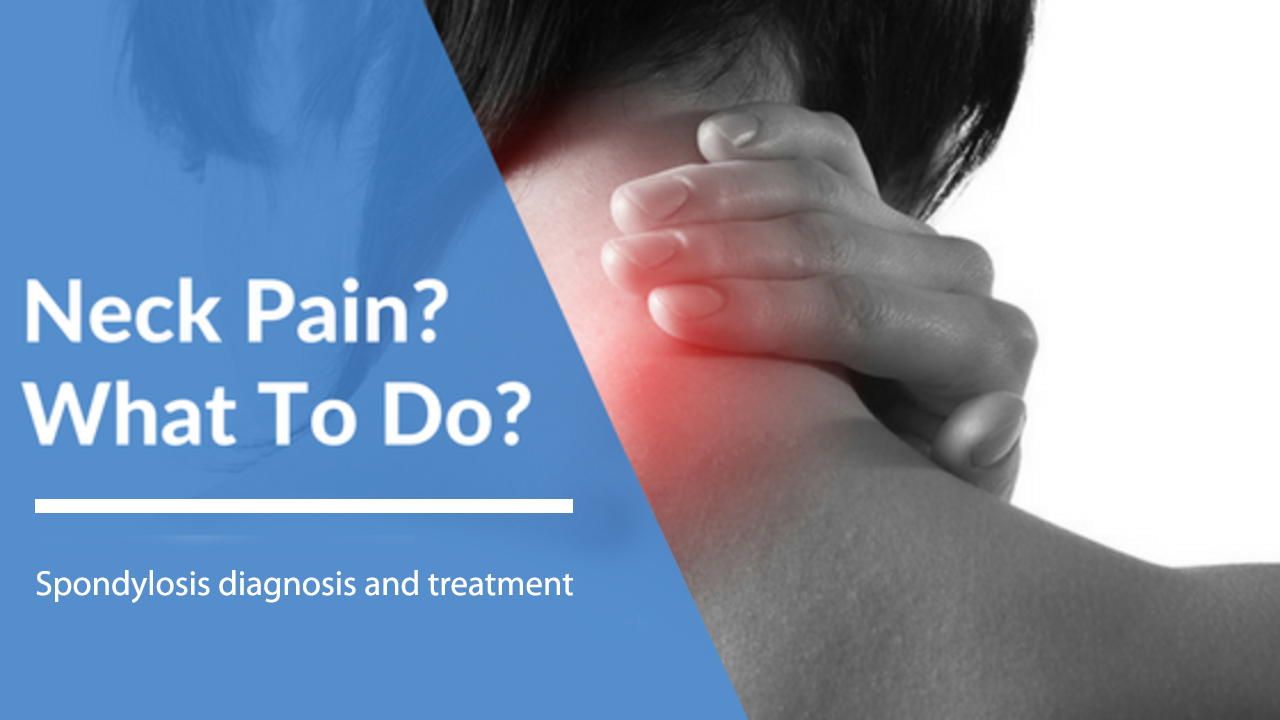
Neck Pain
Neck pain is a widespread medical condition that has affected almost all of us at some point or other.
Causes:
-
- Neck pain can be caused due to a number of diseases or underlying condition. Common reasons for the neck pain include
- Spondylosis and spondylitis due to inflammation of the vertebral joints.
- Degenerative disc disease
- Neck strain
- Neck Injury
- Herniated disc or a pinched nerve
- Neck pain can also arise from various infections such as
- Viral Infection & throat infection leading to swelling of lymph node and neck pain.
- Neck pain due to tuberculosis of neck
- Infection of spine bone in the neck (osteomyelitis and septic discitis)
- Meningitis accompanied by stiffness of the neck
- Neck pain arising from conditions that directly affect the neck muscle
- Fibromyalgia
- Polymyalgia Rheumatica
- Neck pain can be caused due to a number of diseases or underlying condition. Common reasons for the neck pain include
Risk Factor
Neck pain is inevitable, however knowing about the risk factors can reduce your chances of a chronic neck pain and potentially increase your overall health and well-being.
- Some of these are:
- Bad posture
- Prolonged sitting
- Injury due to involvement in contact sports
- Motor-vehicle accidents
- Bull or bronco horse riding,
Prolonged sitting & Bad Posture
This is the most common cause of neck and back pain and is commonly seen in IT professions which involves sitting in a single position for a prolonged duration of time. Sitting with chin protruding forward for prolonged hours puts a strain on the ligaments provoking neck pain. In the same token sitting with back protruding and rounded puts a similar strain on the ligaments. Mechanical pain arises when the joint between the 2 bones has been placed in a position that overstretches the surrounding soft tissues.
The spine has natural curves at the neck and in the lower back. In order to produce less strain on the ligaments connecting the vertebral bones, the spine curvature must be maintained at all times. Office chairs need to meet ergonomic requirements. A good chair goes a long way in preventing pain
Clinical Representation of Neck Pain
Pain in the neck is commonly associated with dull aching pain. Sometimes this pain is worsened with movement of neck or turning head. In a few cases, neck pain can be associated with headaches, shoulder pain and arm numbness etc. Depending upon the condition, a neck pain can be associated with back pain as commonly seen in cases of ankylosing spondylitis.
Spondylosis
Spondylosis is a very common disorder involving the neck and lower back areas occurring as a result of wear and tear. It is typically seen in the age group of over 50 years, with an increased prevalence towards women. The actual changes leading to the condition include the formation of bony spurs in the vertebral bones and degeneration of the discs or the cushions in between the vertebral bodies. As a result of these changes, the spinal nerves coming out of the spinal canal located inside the vertebral bodies are compressed. This causes pain in these areas.
- Risk factors for Spondylosis:
- Degeneration and ageing process.
- Smoking.
- Genetic factors.
- Lifting heavyweights.
- Previous spine injuries.
- Signs and Symptoms of Spondylosis:
- Dull aching pain in the neck and lower back.
- Radiating pain to associated limbs as in arms, legs, shoulders and buttocks.
- Inability to entirely turn the neck or bend fully.
- Grinding sounds in the neck during movement.
- Compression of nerves commonly referred to as pinched nerves can cause severe tingling pain, weakness and numbness in the associated limbs.
- Vertigo and poor balance.
- In extreme cases, spinal cord compression can also result, leading to bowel and bladder dysfunction.
Diagnosis:
The diagnostic tools for neck pain include X-Ray, CT scan and MRI. Blood tests like HLA B27, Complete Blood Count, ESR and ANA, are ordered in suspected cases of Spondylitis.
-
- Treatment:
-
- Degenerative changes in the spine are irreversible; however, several treatment options are available including
- NSAIDS and muscle relaxants.
- Hot and cold therapy
- TENS and Physiotherapy
- Chiropractic manipulation
- Acupuncture and pressure.
- Epidural steroid injection
- Discectomy and Laminectomy in severe cases.
Who treats Neck pain?
Doctors who treat neck pain include general medicine physicians, orthopedists, rheumatologists, neurosurgeons, neurologists.
Role of Physiotherapy
Physiotherapy has a very important role in alleviating discomfort from the neck. The role of the physiotherapist includes reinforcing proper posture during daily work, exercises for the neck and lower back. A series of neck exercise program include:
- Neck stretches
- Neck strengthening
- Aerobic conditioning
Before beginning any neck stretching or exercise program, it is advised to consult a health professional. While neck stretching and exercises can be somewhat uncomfortable when performed initially they should not cause or exacerbate neck pain. If a neck exercise is painful or does not feel right, it should be stopped and a medical evaluation should be sought.
About The Author
Dr. Vijaya Vathsa– MBBS, MD, (Diplomate American Board of Internal Medicine)certified in pain management Acupuncture
For booking, appointment call us today!!!
If you have further questions then please contact us on.

